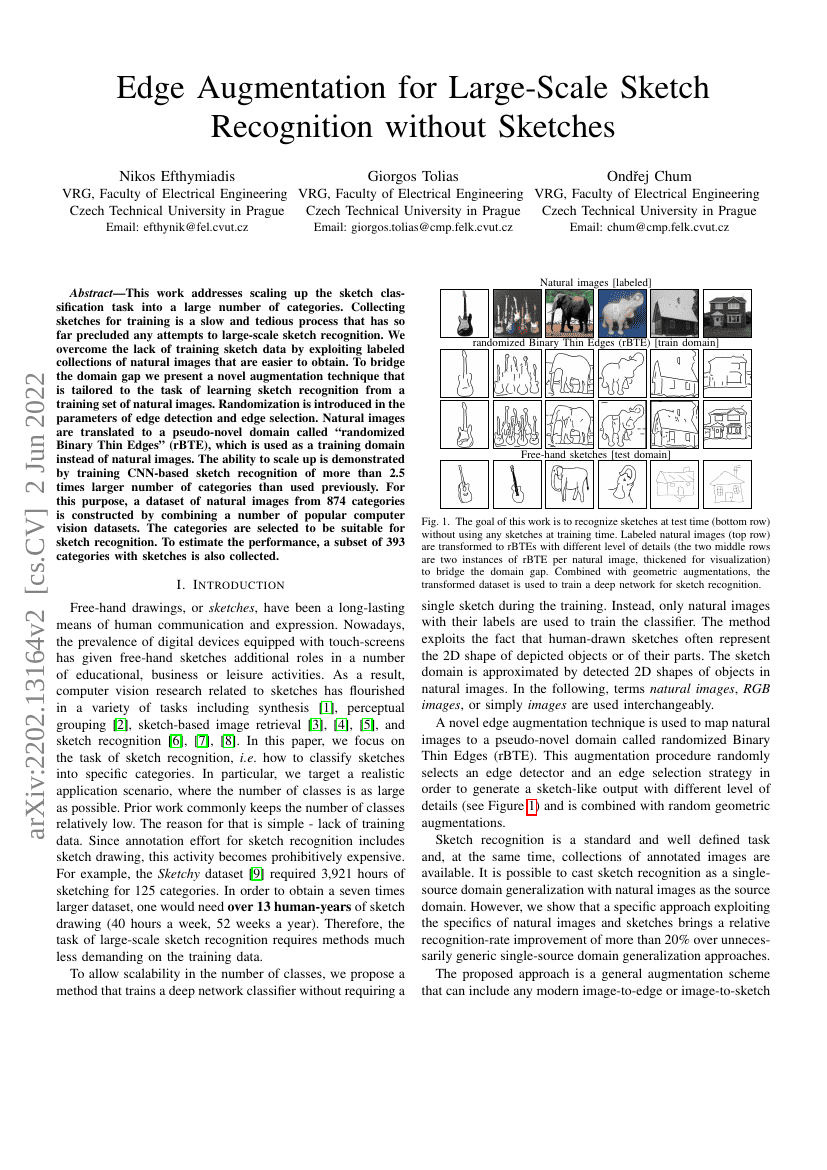Command Palette
Search for a command to run...
Efthymiadis Nikos ; Tolias Giorgos ; Chum Ondrej

Abstract
This work addresses scaling up the sketch classification task into a largenumber of categories. Collecting sketches for training is a slow and tediousprocess that has so far precluded any attempts to large-scale sketchrecognition. We overcome the lack of training sketch data by exploiting labeledcollections of natural images that are easier to obtain. To bridge the domaingap we present a novel augmentation technique that is tailored to the task oflearning sketch recognition from a training set of natural images.Randomization is introduced in the parameters of edge detection and edgeselection. Natural images are translated to a pseudo-novel domain called"randomized Binary Thin Edges" (rBTE), which is used as a training domaininstead of natural images. The ability to scale up is demonstrated by trainingCNN-based sketch recognition of more than 2.5 times larger number of categoriesthan used previously. For this purpose, a dataset of natural images from 874categories is constructed by combining a number of popular computer visiondatasets. The categories are selected to be suitable for sketch recognition. Toestimate the performance, a subset of 393 categories with sketches is alsocollected.
Code Repositories
Benchmarks
| Benchmark | Methodology | Metrics |
|---|---|---|
| image-to-sketch-recognition-on-im4sketch | rBTE (ResNet101) | Accuracy: 11.3 |
| image-to-sketch-recognition-on-im4sketch | ResNet101 | Accuracy: 5.3 |
| image-to-sketch-recognition-on-pacs | rBTE (ResNet18) | Accuracy: 70.6 |
| image-to-sketch-recognition-on-sketchy | ResNet101 | Accuracy: 11.4 |
| image-to-sketch-recognition-on-sketchy | rBTE (ResNet101) | Accuracy: 57.2 |
Build AI with AI
From idea to launch — accelerate your AI development with free AI co-coding, out-of-the-box environment and best price of GPUs.